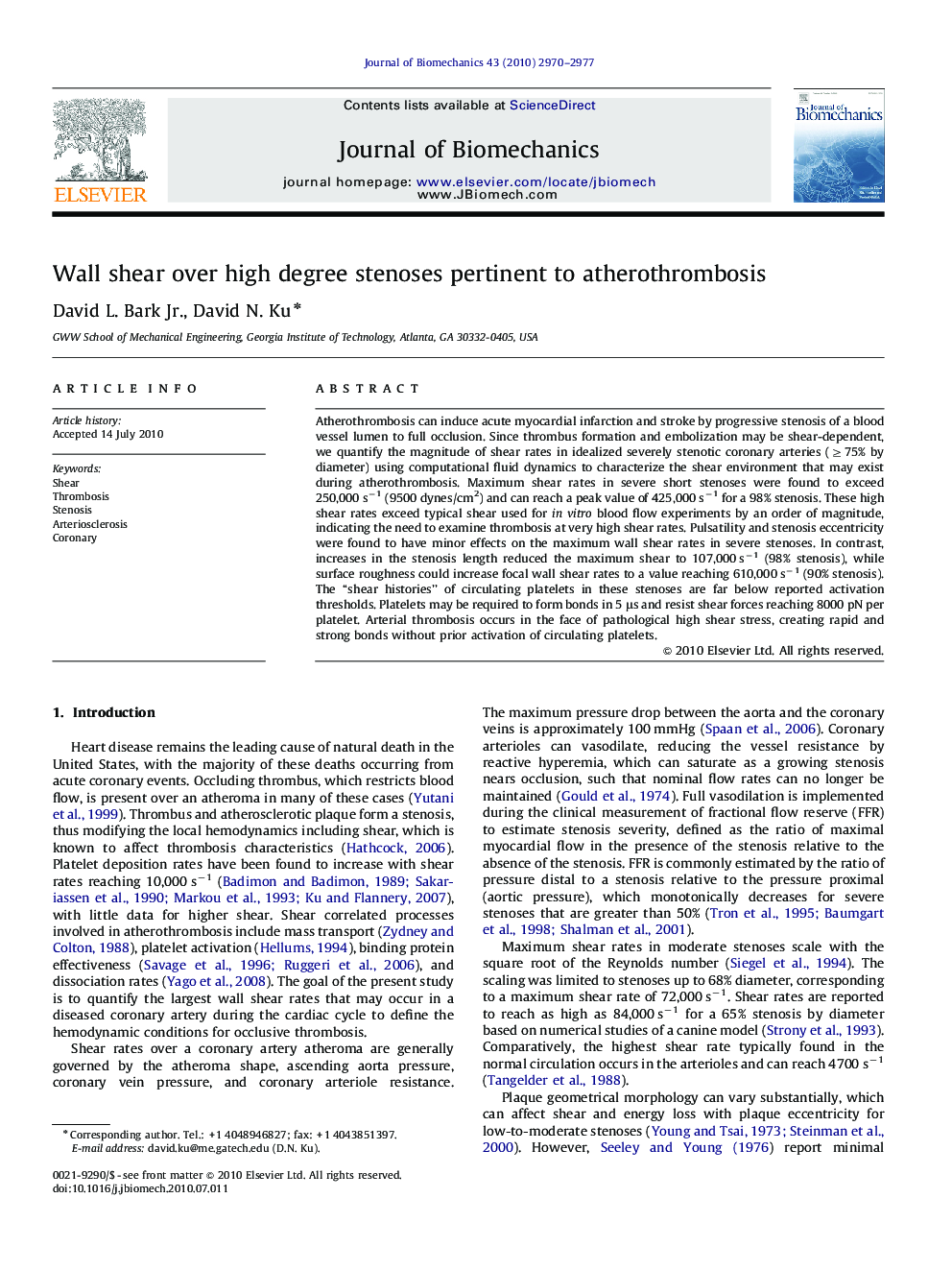| Article ID | Journal | Published Year | Pages | File Type |
|---|---|---|---|---|
| 872470 | Journal of Biomechanics | 2010 | 8 Pages |
Atherothrombosis can induce acute myocardial infarction and stroke by progressive stenosis of a blood vessel lumen to full occlusion. Since thrombus formation and embolization may be shear-dependent, we quantify the magnitude of shear rates in idealized severely stenotic coronary arteries (≥75% by diameter) using computational fluid dynamics to characterize the shear environment that may exist during atherothrombosis. Maximum shear rates in severe short stenoses were found to exceed 250,000 s−1 (9500 dynes/cm2) and can reach a peak value of 425,000 s−1 for a 98% stenosis. These high shear rates exceed typical shear used for in vitro blood flow experiments by an order of magnitude, indicating the need to examine thrombosis at very high shear rates. Pulsatility and stenosis eccentricity were found to have minor effects on the maximum wall shear rates in severe stenoses. In contrast, increases in the stenosis length reduced the maximum shear to 107,000 s−1 (98% stenosis), while surface roughness could increase focal wall shear rates to a value reaching 610,000 s−1 (90% stenosis). The “shear histories” of circulating platelets in these stenoses are far below reported activation thresholds. Platelets may be required to form bonds in 5 μs and resist shear forces reaching 8000 pN per platelet. Arterial thrombosis occurs in the face of pathological high shear stress, creating rapid and strong bonds without prior activation of circulating platelets.
